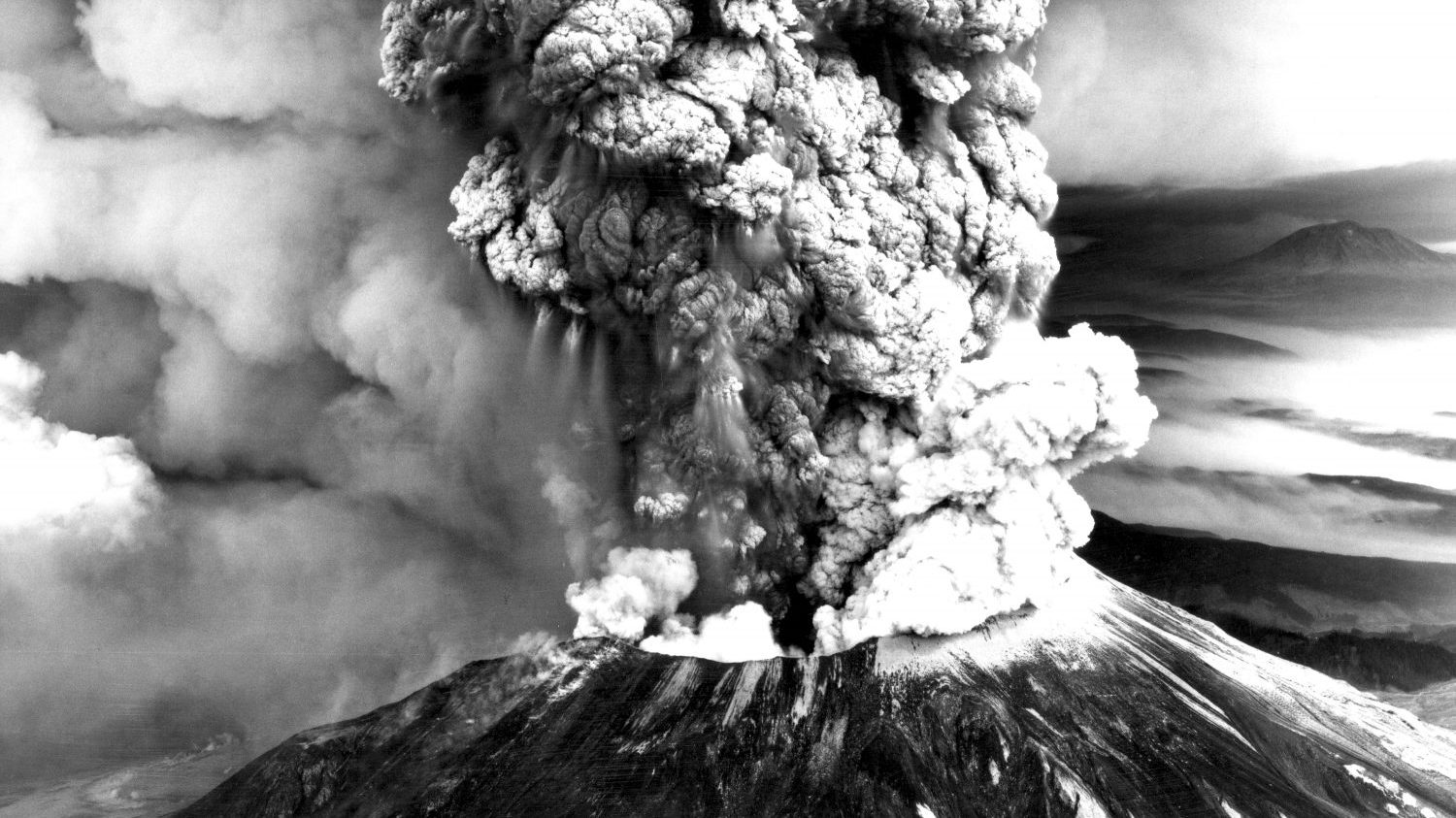#FlashbackFriday: Mount St. Helens Erupts, Affecting Several Exchanges

On May 18, 1980—42 years ago this week, Mount St. Helens erupted in southwest Washington state. It was the deadliest volcanic explosion in continental U.S. history, with 57 people killed in the blast’s aftermath. Several exchanges in the Northwest were affected by the eruption.

The eruption of Mount St. Helens sent an ash column 11 miles into the sky. The cloud rolled eastward, affecting exchanges as far as 750 miles away. (Robert Krimmel/U.S. Geological Survey)
Although Exchange stores at Fort Vancouver and Portland International Airport were about 50 miles away from the mountain, they only received a dusting from the eruption, which sent ash 11 miles into the sky. But the cloud rolled eastward, covering much of the state with daylong darkness. More than 600,000 tons of ash fell on Yakima, more than 100 miles to the east of the volcano.
Fairchild Air Force Base, more than 300 miles away from the volcano, was similarly affected. The eruption occurred on a Sunday, when more than 40,000 people were at the base for an open house and air show. As the darkness descended, the show was canceled and the visitors were evacuated.
On the Monday after the eruption, the command unit at the Yakima Firing Center notified the Exchange manager that military police would pick her up so she could open the store for troops who were stranded at the center. By Tuesday, other associates returned—driving 15 mph through the darkness to open the snack bar. MPs and Soldiers from the 1/67th Air Defense Artillery helped with store cleanup, which took a week.
Because interstates were closed, drivers from the Puget Sound General Merchandise Distribution Activity, sent to restock Yakima and Fairchild, had to navigate back roads. They encountered ashfall as deep as 18 inches, forcing them to drive as slow as 5 mph because the conditions were similar to driving on ice. Air filters were changed every 600 miles.
Exchanges as far away as Malmstrom Air Force Base, Montana—about 750 miles from Mount St. Helens—reported a dusting of ash strong enough that associates wore surgical masks to avoid irritation from the dust.
Although the Fort Vancouver/Portland facilities were lightly affected by the initial eruption, a second eruption a week later blackened the sky and about 2 feet of ash fell on the parking lot. Not as much ash got inside the facility, but merchandise was still covered with it.
The 1980 eruption of Mount St. Helens, which remains active today, heavily influenced the study of volcanoes. Today, the Joint Base Lewis-McChord Exchange operates facilities in Vancouver, Washington, as well as in Yakima and Portland. Fairchild and Malmstrom are also still home to exchanges.
Sources: Exchange Post archives; One Hundred Years of Service: A History of the Army and Air Force Exchange Service, U.S. Geological Survey

